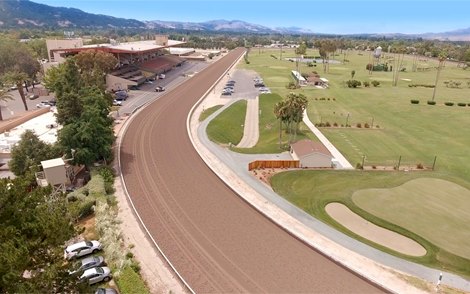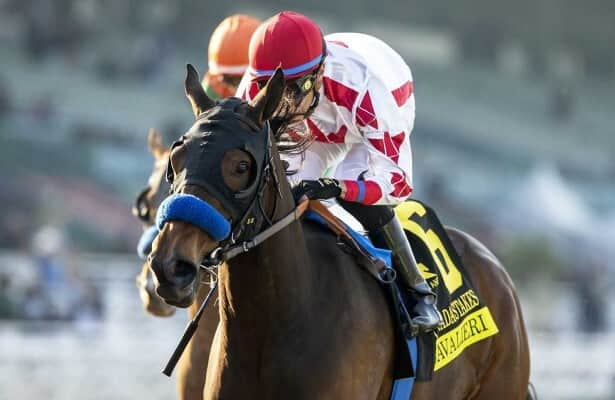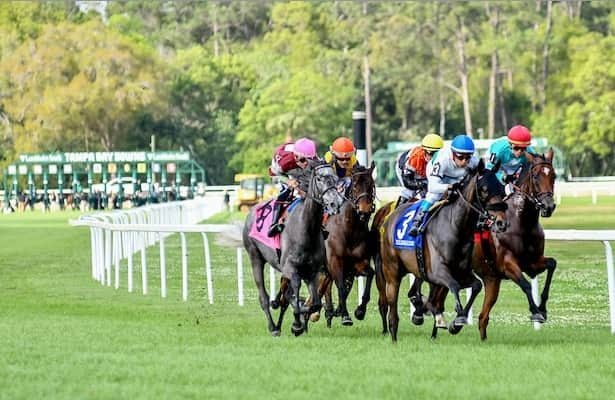Despite the turmoil happening in the state’s racing industry, the California Horse Racing Board’s Feb. 20 meeting lacked any fireworks.
With the cessation of all Golden State Racing stabling and training operations at the Alameda County Fairgrounds, the site of Pleasanton racetrack, looming just 33 days away, CHRB executive director Scott Chaney said his “impression” is that at least one fair is considering applying for racing dates.
Chaney said that he, along with other board leaders, met with counterparts representing the racing fairs individually and collectively.
“They all expressed their desire to race but acknowledged the hurdles to racing, which included economic headwinds with the closure of Pleasanton, the prospect of no existing horse population in Northern California, and the logistics of operating a fair meet without the assistance of (the California Authority of Racing Fairs),” Chaney said.
CHRB vice chairman Oscar Gonzales noted that Chaney extended each of the fairs “up to 90 days from the time that they would commence a fair meet from the time that they request the dates, and then during that 90-day period, they would have to submit their application again.”
Gonzales said Ferndale expressed interest in running a meet.
“They’re trying to bring together the different components of Fresno, their fair board leadership, who I communicated with, is also considering. But I’d have to say preliminarily that the other three fairs, Cal Expo, Santa Rosa, and Pleasanton, are probably going to opt out this year, if not indefinitely.”
Gonzales also said that he believes there will come a time when the CHRB will have to discuss the impact of closures in Northern California on the workforce, which he said is “significant.”
“There will come a time when we have to have a conversation about what this board’s role is or is not as it relates to other areas of impact because of this significant setback,” Gonzales said.
Meanwhile, the CHRB approved a request to modify the distribution of market access fees from advance-deposit wagering, which chairman Gregory Ferraro said “otherwise would have funded purses and commissions to cover the assessments as allocated to each signatory racing association.”
Chaney said that the total cost of the Horseracing Integrity and Safety Authority’s 2025 assessment for the state is $6.9 million. He said what was before the board was the industry’s proposal for paying what is owed. Chaney said HISA and the Horseracing Integrity and Welfare Unit were “very generous” with California. After factoring in some of the services the state provides from adjudication to sample collection to testing at the University of California-Davis and research, California stakeholders would be “on the hook” for approximately $800,000, which Chaney said is about half of what was paid last year.
It was noted by Chaney that should the fairs choose to run this year, they would have to sign the agreement and be responsible for their share. If they do not, the amount would be owed by whoever the host would be at that time—Del Mar, Santa Anita Park, or Los Alamitos Race Course.
Handle Report
Chaney said that for the month of January, the handle for day racing in California was down 15%, night racing was up 3%, while the total handle was down 15% when compared to January 2024. He said these numbers reflect the lack of racing in Northern California. When comparing calendar year 2024 to 2023, day racing was down 7%, night racing saw a 6% decline, and total handle was down 7%. Chaney said that total all-sources handle for the year was $2.8 billion, down from $3 billion in 2023.
Board Departure
Also, commissioner John Carvelli, who was appointed to the CHRB in August 2024, resigned from his position, Chaney acknowledged during Thursday’s meeting. Chaney said the resignation came “about 10 days ago.” No reason for Carvelli’s resignation was given.












